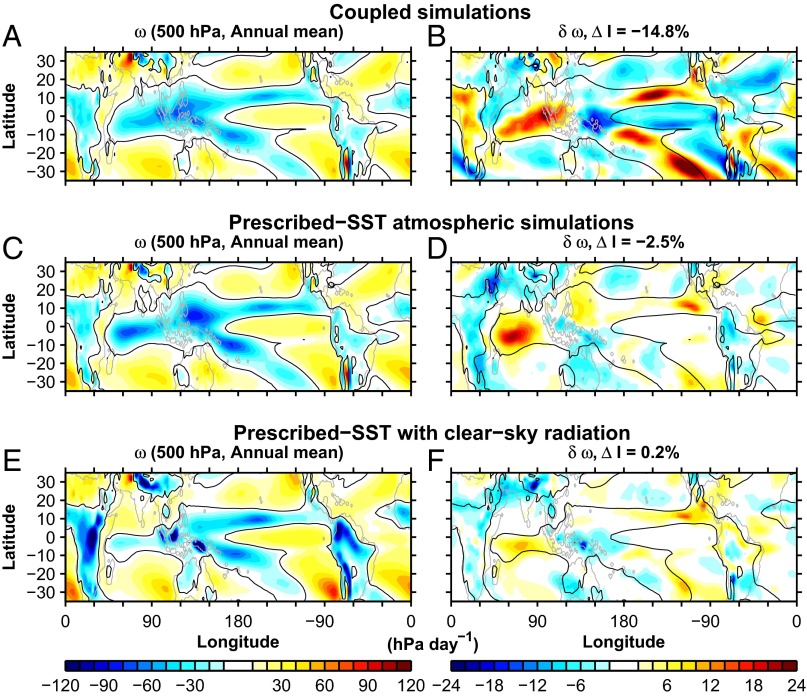Fig. 1.
An important fraction of the weakening of the tropical circulation in climate change simulations occurs as a direct response to increased concentration in the absence of changes in SST, and this results from masked radiative forcing. (A, C, and E) Annual-mean pressure velocity ω at 500 hPa for preindustrial () simulations and (B, D, and F) the change in pressure velocity at 500 hPa between and simulations for (A and B) a coupled ocean–atmosphere GCM (GFDL’s ESM2M), (C and D) the atmospheric component of the GCM (GFDL’s AM2.1) with prescribed climatological SST and sea ice, and (E and F) the atmospheric component of the GCM with clear-sky radiative transfer (Materials and Methods). The percent change in the tropical circulation strength index (; Materials and Methods) between and simulations is shown in the title (B, D, and F).

